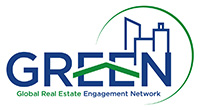Rising energy efficiency standards: A worldwide phenomenon
A minimum energy label requirement is becoming the standard. What is happening across regions? What is the effect of regulation and how is the market responding? Do building owners financially gain or lose from the costs involved? Linde Kattenberg, PhD Candidate at Finance, School of Business and Economics, Maastricht University, describes it in this article.
The regulatory bar is raised for energy efficiency standards
Several countries have introduced policies classifying the energy efficiency of buildings using a labeling system, as part of their strategy to reduce the energy use of the building stock. In the EU, as a part of the “renovation wave” strategy, the Energy Performance of Buildings Directive (EPBD) outlines guidelines for energy performance standards to reduce greenhouse gas emissions. Initially introduced in 2003, the directive aims to improve the energy performance and cost-effectiveness of buildings considering their internal and external conditions. That is done through guidelines for energy efficiency measurement and a labeling system. The labeling system assigns an energy label to buildings, where a label A(+) indicates the most energy-efficient building and label G indicates the least.
In March 2023, the EPBD was revised to accelerate the decarbonization of buildings and achieve a net zero-emission building stock by 2050. The most important revision is the introduction of a minimum energy efficiency standard for all buildings. Non-residential buildings with the lowest (class G) energy performance certificate (EPC) will need to be renovated to at least class F by 2027 and class E by 2030.
A worldwide phenomenon
In some countries, policies have already anticipated these requirements, and their governments have introduced a faster transition period than mandated at the EU level. In the Netherlands offices need to have at least a C label since the start of this year. In Flanders, all commercial real estate put up for sale after 2022 has to have improved the roof insulation, windows, heating, and cooling systems if they are below the specified minimum standard. The UK uses the same EPC scale from G to A. From April 2023, the UK will prohibit the lease of commercial buildings with an EPC rating below E and from 2030, the minimum label will be B. In the US, there is no national policy, but for instance, New York City has introduced Local Law 97, where buildings larger than 25,000 square feet must meet emissions caps that are based on their occupancy type (such as residential, commercial, or industrial) and their age. South Korea and Tokyo also have set a cap for office buildings that are over 1,000 square meters, which is a cap and trade system allowing those owners below the cap to sell their credits to owners above it. In Singapore, all buildings that are newly built or undergo a major retrofit have to comply with minimum energy efficiency standards, that are specified per type and use of the building.
The regulation bar is financially-beneficial for building owners
Interestingly, while tougher energy regulations require owners to take action to lower the energy use of their buildings, the investments usually prove beneficial. The investment very often produces a higher selling price and a higher rent. There are also exceptions to a minimum standard in some jurisdictions when the payback period is too long. For instance, the UK has produced a ‘payback calculator’ for estimating average investment costs, with all investments that have an estimated payback period of more than 7 years not needing to be implemented. The Netherlands has a similar exception for measures that have a payback period of more than 10 years.
There are many aspects related to the cost of a retrofit, including upgrading the lighting, the ventilation system, the insulation, replacing the windows, and installing a heating and cooling system that is powered by a heat pump. The cost-effectiveness can also depend on how buildings were originally built. For instance, when a building has cavity walls it is much easier to insulate the walls. The installation of solar panels can also lead to a label upgrade, but some buildings might not have a roof that is suited for the installation of these panels, or the panels would not catch enough sunlight on these roofs. The installation of heat pumps takes up space and can be more cost-efficient in areas where land is less expensive. In most cases, historical buildings, which are costly to retrofit due to the need to preserve authentic elements, are also exempted from these types of regulations. Thus, all the above-mentioned situations could lead to exemptions for compliance with the regulation in some jurisdictions.
How does the market respond?
A recent working paper (Eichholtz et al., 2023) analyzed the introduction of a minimum C label that applies to the office market in the Netherlands and that was passed in 2018, with sanctions imposed from 2023 onwards. They found offices with an energy label of C or better, achieved a 19.9% higher sale price, following the announcement of the regulation in 2018. They also found that owners have upgraded their buildings to a higher standard than the C label requirements. There are also other market incentives driving retrofitting above the minimum energy efficiency standard, for instance, for building owners that operate in a higher segment of the market. In the study, buildings with a 1% higher selling price on average have an 8% higher energy label level, and a 2% higher likelihood to improve the energy performance above the minimum EPC benchmark level. A study by Sayce and Hossain (2020) that interviewed practitioners in the UK, observed a similar movement where buildings are upgraded to a level that goes beyond the introduced energy efficiency standard. It was noteworthy that large investors upgraded buildings to a higher standard while smaller investors complied with the minimum or sold their buildings to larger investors. This ultimately resulted in average building certification in the market being raised above the minimum standard.
Summary: investments typically benefit building owners financially
A minimum energy label requirement already exists in some countries or will be implemented in the near future. Although there are costs involved, investments aimed at achieving minimum standards will typically benefit building owners financially. The effect of regulation is not only the upgrade of buildings with the lowest energy labels, but it also increases the market awareness of the value of energy efficiency and also upgrades buildings beyond minimum standards.
Call upon other investors to collaborate to achieve real-world impact
GREEN is a not-for-profit collaborative engagement initiative for institutional investors, focusing on reducing climate risk in the real estate industry. GREEN members acknowledge the importance of collaboration to initiate change and maximize impact. We, therefore, call upon other institutional investors to join GREEN and work together towards a Paris-aligned real estate sector. Check the investor statement for more information.
Disclaimer
The views presented in this article reflect the views of the GREEN Secretariat but do not necessarily represent those of the individual GREEN members.
Sources:
- Eichholtz, P., Kok, N., Sun, X. (2023) The Impact of Minimum Energy Performance Standards on the Commercial Real Estate Market. MCRE Working Paper.
- Sayce, S. L., & Hossain, S. M. (2020). The initial impacts of Minimum Energy Efficiency Standards (MEES) in England. Journal of Property Investment & Finance, 38(5), 435-447.






